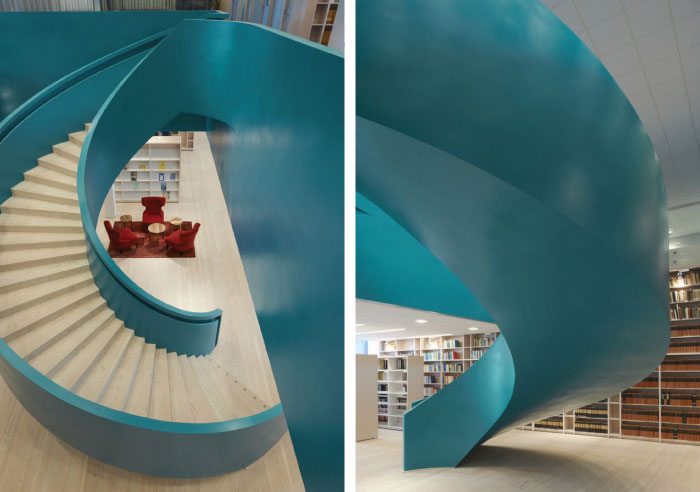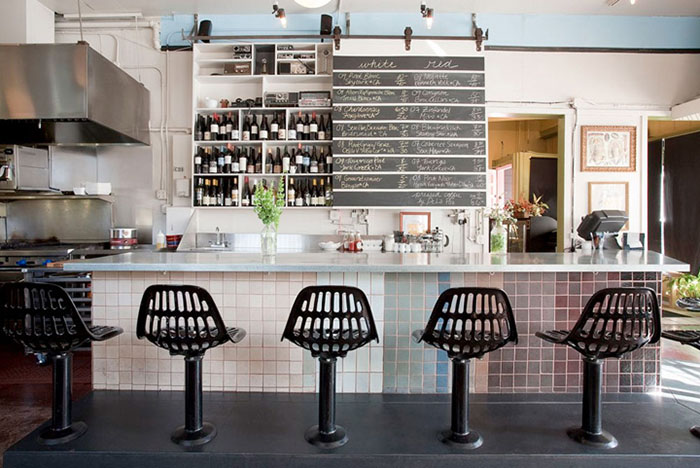Here is a less obvious example of emphasis in design. Interior design firm Geremia used really heavy, dark stools contrasting with a lighter surrounding to make the counter a focal point in Citizens B Restaurant.
If you read our blog you know that we have already touched on all the elements of design (line, colour, texture & pattern, light, and scale & proportion) as well as two of the principals of design (balance and rhythm). This week we’re moving on to emphasis, probably one of the most well-used design principals.
Two of the questions we always ask our clients during the programming phase include: 1) What do you want to highlight in your space, and 2) What do you want to hide in your space? These questions form a foundation for our interior designers to create and/or distract focus from an area. Typically in commercial interior design we find our clients are most interested in highlighting their products, signage or customer service counters, whereas in residential projects design elements such as a fireplace, artwork, the staircase, high ceilings, or large windows with views tend to be the focal point.
 It’s pretty obvious that Pinkeye Crossover Design Studio wanted the yellow desk to be the focal point in their design for Oz Flagship, but they also applied texture to create a screen partition with secondary emphasis.
It’s pretty obvious that Pinkeye Crossover Design Studio wanted the yellow desk to be the focal point in their design for Oz Flagship, but they also applied texture to create a screen partition with secondary emphasis.
A focal point or even two emphasized areas can really help to create drama and interest in a space all while creating an everlasting first impression. Because we focus on commercial interior design here at Hatch (and these first impressions are always so important for the success of a business), it is essential that we ensure a client’s product and brand message are dominant in our projects and we do this in a number of ways.
Emphasis via Placement
The way you place your intended focal point within a space is one very important consideration. For example, in a linear room such as a hallway the wall space at the very end of the hall or a feature area in the centre would have the most impact. If you read our last blog post and intend to create rhythm by repeating elements in your design, you could create a focal point by interrupting that regularity right down the centre to bring attention to the “one-thing-that’s-not-like-the-others”.
 The most commonly used way to create focus is to use colour just like Wingardh Architects did in this law office design for Vinge. That staircase sure pops with that deep teal hue.
The most commonly used way to create focus is to use colour just like Wingardh Architects did in this law office design for Vinge. That staircase sure pops with that deep teal hue.
Emphasis via Elements of Design
Since you are now so well-versed in all the elements of design, why not use one or two of them to create emphasis? Colour and light are two really easy ways to do this. Use a contrasting or bright hue along with some spot lighting to make sure your important item gets the attention it deserves. You can also introduce a new texture, smaller scale items, or direction using lines around your focal point to really make it stand out.
We think you’re getting the picture here, basically work towards creating noticeable contrast around your focal point and it will shine within your retail shop, office, spa, or restaurant design. There are few more elements of design coming up in our future posts, don’t forget to check back soon.
